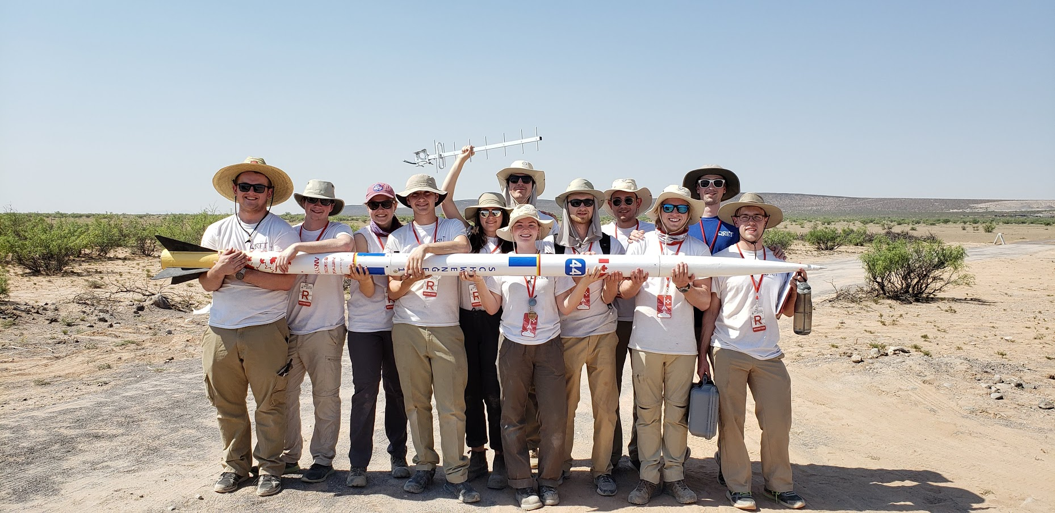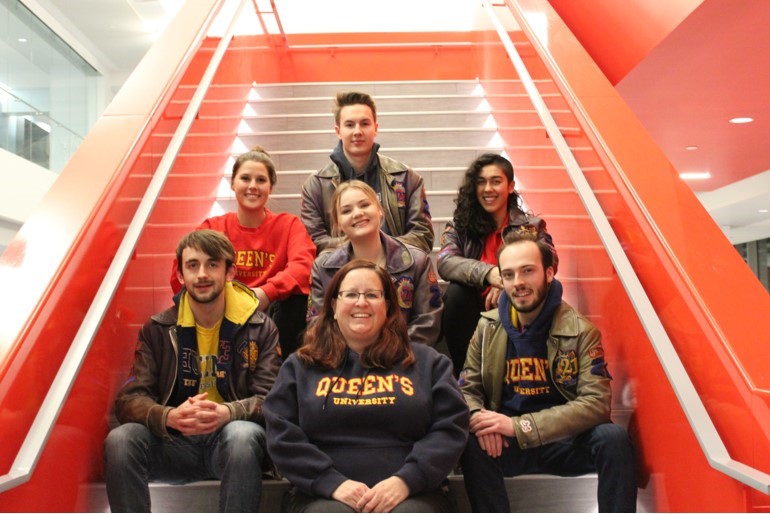The Queen’s Rocket Engineering Team was on track for a successful 2020 before the coronavirus struck. In 2018, the team participated in the biennial SpacePort America Cup in New Mexico where it placed 6th out of 23 in its category and 38th overall out of 120 teams. In the meantime, third-year Engineering Physics student Maranda Cherry became president of the team.
“Our goal as a team is to teach our members the relevant expertise to get into an aerospace related career or postgraduate degree, as well as to manufacture our own rocket from scratch,” Cherry said.
A multidisciplinary team, the Queen's Rocket Engineering Team (QRET) counts upwards of 50 members who come from both in and outside the Faculty of Engineering and Applied Science. They all share a passion for design and construction of high-speed aircraft for the space and aerospace industries.
“In previous years our rocket went supersonic,” she said. “Mach 1.4. It went to 25,000 feet. It’s a sounding rocket, so it goes up and comes back down. Not into orbit."

Cherry, who is Metis, at the same time assumed a leadership role in the Queen’s chapter of the American Indian Science and Engineering Society’s participation in First Nations Launch.
First Nations Launch is an annual competition hosted by NASA exclusive to Indigenous students. In 2019, the Queen’s team became the first outside the United States to participate. A multistep competition, the team had to present their adapted rocket designs throughout the fall and winter. The competitive launches themselves are smaller in scale from the ones the QRET team builds.
“This year is 3500 to 4000 feet maximum,” she said, “and basically we’re buying a kit rocket off the shelf. We modify it, make it our own, and work toward the specifications required for the challenge. Every year there’s a unique challenge involved with it.”
By early spring, nearing the date in which all eligible teams were to travel to Wisconsin to launch their rockets competitively, the Queen’s team had a decisive lead over the others on the points-based scale by which they were all evaluated, and was on its way to win the entire competition in its first year of participation.

For Maranda, this isn’t just a hobby, but stepping stones to a career in aerospace engineering. “After I graduate, I plan on going into post-graduate study,” she said. “I'd like to get a Masters of Aerospace Engineering, and even a PhD. Then I'd like to work in the private aerospace sector. Maybe somewhere like Rocket Lab in New Zealand or something like SpaceX.”
Though there are just four astronauts in Canada, the technical requirements for the job are not complicated. Both NASA in the U.S. and the Canadian Space Agency in Canada define them on their respective websites. In Canada, a citizen must have a degree in engineering or science, plus three years professional experience (two if the individual has a master’s degree). There are physical and medical requirements, of course.
“I’d apply to be an astronaut if there ever was another opportunity,” she said. “I’ve talked with a few astronaut candidates about the process involved with applying to become an astronaut, and they all emphasized that I should choose a career first. It shouldn’t be your final career because the chances of getting selected are quite low.”
The QRET team this year has abandoned hopes to participate in the SpacePort America Cup, assuming travel to New Mexico in June will be unlikely. But it is eyeing a new competition. Exclusive to Canadian participants, the inaugural Launch Canada challenge was intended for August 2020 and, when it didn’t happen, was moved to August 2021.
For this year’s First Nations Launch competition, the Queen’s team and NASA organizers are investigating potential launch locations in Canada, if travel to Wisconsin is again impossible. Already the team is on track to have a phenomenal year. One of the judges in the Technical Design Requirements section, a recent round of the competition, commented: "You guys crushed this. This isn't far off from a verification matrix that I would expect for one of my NASA missions. Crushed."
In the meantime, Cherry has found a robust community of students and young professionals. “Launch Canada started a forum and a whole community of all the teams and the members of those teams from different universities that are a part of the competition,” she said.
“And I'm finding more and more people who are sharing the same interests as me and others that are still an undergraduate or in graduate study. When (Launch Canada) started, I was in first year and since then it’s definitely grown exponentially. People are just wanting to talk about their interests more and about potential career paths and such.”